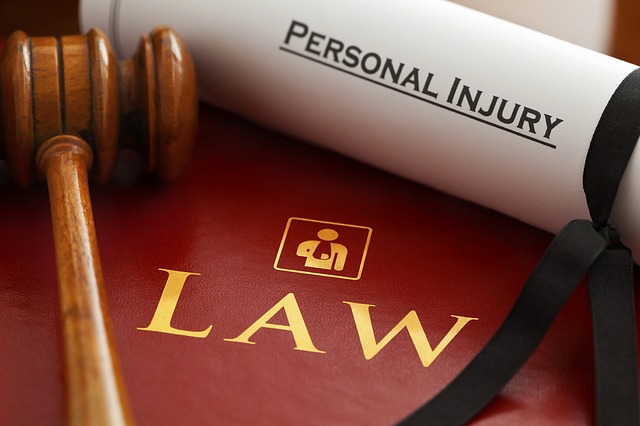At some point soon after being hurt in any kind of accident, a person’s thoughts naturally turn to the matter of being made “whole”. The focus then shifts to the question of fault. If another person or persons are to be held accountable, the matter must be directed through the laws governing personal injury.
If under the law another party was negligent and so is liable for the injury, the injured person can seek payment. In a civil society, money is the instrument of satisfaction for damages to persons or property so the pivotal question becomes: how much is this injury worth? How much money would fairly balance the damages, financial and other, that have been sustained?
The answer to bears directly on the question of how worthwhile it would be to seek redress, whether or not to take the first step in doing so: consulting a personal injury attorney.
At the detailed, execution level the “pricing” of personal injury cases is very complex. It requires the expertise of an experienced, specialized lawyer. That said, an interested layperson can and should become familiar with the basics in order to make good decisions about seeking professional legal services.
DAMAGES AND DOLLARS
The amount of a personal injury claim is shaped by a process of valuation. There are some generic steps in this process, and Florida law has some special provisions which we’ll bring forth as applicable.
There are two classes of damages, compensatory and punitive. The present discussion deals with compensatory damages, as punitive awards are very rare in Florida personal injury cases.
Compensatory damages repay an injured person for what was taken from him or from her by the injury. There are two types, special and general.
SPECIAL AND GENERAL DAMAGES
Special damages are economic, and computing these is relatively straightforward. Medical bills, lost wages, and property damage are examples. Future, as well as current expenses resulting from the injury, are included in this category.
General damages are non-economic and more difficult to put a dollar figure on. The broad definition is pain and suffering, both physical and mental. There are two basic methods for arriving at a number for general damages due to personal injury, although it should be noted that insurance companies are not obliged to use either of these in coming up with their settlement offers.
THE MULTIPLIER
The first valuation method is formulaic. A multiplier is applied to the special damages figure to compute a value for general damages. For example, if special damages total $2,000 and a multiplier of 3 is chosen, the computed value for general damages is $6,000.
The typical range of the multiplier is 1 – 5, that is, the general damages usually are calculated to be somewhere in the range of equal to the special damages, and up to five times that amount. An appropriate multiplier reflects the severity and the duration of the pain and suffering caused by the injury.
Pain and suffering cannot be directly measured. The testimony of the injured person can be influential at trial, but so are the facts of the case. The choice of the multiplier takes into account visible, objective indications such as prognosis, the kinds of medical treatment received, and the types of injuries sustained.
Compensation for emotional distress can be claimed, too. For example, a person who, as the result of an injury, can no longer take part in activities enjoyed before the accident may claim compensation for loss of enjoyment.
As an illustration, consider a case where the injured’s special damages total $10,000. The injuries are of moderate severity and duration and were not the result of an auto accident. A justifiable multiplier might be 1.5. The general damages would then calculate to $15,000.
PER DIEM
The other way general damages are figured is called the “per diem” method. A fixed dollar value is assigned for each day that passes between the date of the injury and “maximum medical improvement’, the date after which no further medical improvement is likely or possible.
The per diem dollar value is often anchored to the injured person’s typical daily earnings. As an example, a plaintiff who is injured on January 1, is in a cast until March 31 and in physical therapy until June 30. He or she is then declared fully recovered by his or her doctors. This person’s lawyer applies a per diem of $100 to the 180 days of treatment and recovery to calculate general damages of $18,000.
Having calculated a dollar number for general damages using either method, this is added to the figure for special damages to compute the reasonable value of the case.
FLORIDA LAW – CAR CRASHES
Florida law includes special provisions governing personal injury in the case of vehicular accidents. These provisions apply certain restrictions and mandates to the valuation and the prosecution of claims.
Florida’s so-called “no-fault” laws provide that people injured in auto accidents, without regard to what happened or who was responsible, must first seek personal injury compensation from their own car insurance companies. The law requires that car insurance policies include Personal Injury Protection (PIP) which covers the insured’s medical and related expenses up to a defined cap. The minimum cap is $10,000. PIP notably does not cover property damage, for which the at-fault party will normally be held liable.
If the injured person’s medical expenses resulting from the injury exceed that cap, a claim may be made on the other party for the excess special damages.
FLORIDA LAW – PURE COMPARATIVE NEGLIGENCE
Another special feature of Florida personal injury law comes into play when any claim for damages is made. Florida is one of only 12 “pure comparative negligence” states. This means that the damages a plaintiff is entitled to are limited by the degree to which the plaintiff is found to have been at fault in causing the accident. For example, where the two sides agree that the plaintiff’s total damages are $10,000, but he or she was 20% at fault in the accident, the award is reduced to $8,000.
FLORIDA LAW – THRESHOLD INJURIES
In the matter of general damages, i.e., pain and suffering, Florida law has another special provision. In the case of injuries resulting from auto accidents, Florida law specifies that plaintiffs can recover pain and suffering damages only if the injuries meet a so-called “threshold” of seriousness.
The threshold injuries are 1) Significant and permanent loss of an important bodily function, 2) Permanent injury within a reasonable degree of medical probability, other than scarring or disfigurement, 3) Significant scarring or disfigurement, or 4) Death.
In effect, Floridian drivers have purchased the convenience and security provided by the PIP mandate by giving up the right to seek compensation from defendants unless the injuries are very severe.
MAKING YOUR DECISION
A recent analysis ranked Florida the worst of the 50 states in which to be involved in a car crash, because of the peculiarities of state law and the ways Florida drivers have adapted to these. You may or may not agree with this finding, but it does underline the importance of securing the best, most experienced attorney you can if you have to navigate those waters.
The same priority applies to any other type of personal injury case, in Florida or elsewhere. Familiarity with the basics of valuing personal injury damages can help you decide on your next steps. Given that the matter is of such an intensely personal nature, perhaps with far-reaching consequences for your quality of life and that of your loved ones, it’s wise to err on the side of caution when in doubt. A consultation with a qualified attorney is rarely a mistake.



